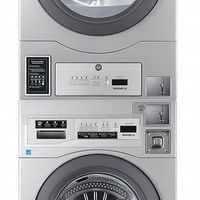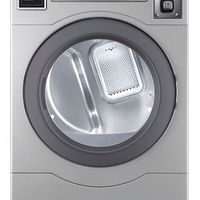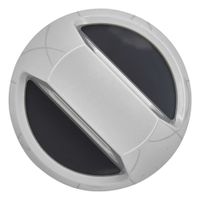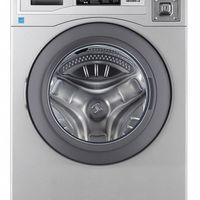Call +(254) 703 030 000 / 751 483 999 / 721 704 777
- Home
- Furnishings Appliances Hospitality
- Appliances
- Washing Machines Dryers
Frequently Asked Questions
How do I choose the right washing machine for my needs?
1. **Capacity**: Determine the load size you typically wash. For singles or couples, a 5-7 kg machine may suffice. Families might need 8-10 kg or more.
2. **Type**: Choose between front-load and top-load. Front-load machines are more energy and water-efficient, while top-load machines are generally cheaper and easier to use.
3. **Space**: Measure the space where the machine will be placed. Ensure there's room for the door to open fully and for ventilation.
4. **Features**: Consider features like quick wash, steam cleaning, temperature control, and specific fabric settings. Decide which are essential for your lifestyle.
5. **Energy Efficiency**: Look for machines with a high energy star rating to save on electricity bills and reduce environmental impact.
6. **Budget**: Set a budget. Remember that while upfront costs for energy-efficient models may be higher, they can save money in the long run.
7. **Noise Level**: If the machine will be near living areas, consider models known for quiet operation.
8. **Brand and Reliability**: Research brands known for reliability and good customer service. Read reviews and consider warranty options.
9. **Technology**: Decide if you want smart features like Wi-Fi connectivity for remote operation and monitoring.
10. **Spin Speed**: Higher spin speeds mean drier clothes but can be harsher on fabrics. Choose based on your fabric types.
11. **Installation and Maintenance**: Consider ease of installation and maintenance. Some models may require professional installation.
12. **Water Usage**: If water conservation is a priority, look for models with efficient water usage.
13. **Aesthetics**: Choose a design and color that fits your home’s decor.
14. **Future Needs**: Consider potential changes in household size or lifestyle that might affect your washing needs.
What is the best way to clean a washing machine?
To clean a washing machine effectively, follow these steps:
1. **Gather Supplies**: You will need white vinegar, baking soda, a microfiber cloth, and an old toothbrush.
2. **Clean the Drum**:
- For a top-loader, fill the drum with hot water, add 4 cups of white vinegar, and let it agitate for a minute. Pause the cycle and let it sit for an hour. Afterward, add 1 cup of baking soda and run a full cycle.
- For a front-loader, pour 2 cups of vinegar into the detergent dispenser and run a hot water cycle. Then, add 1/2 cup of baking soda directly into the drum and run another hot cycle.
3. **Wipe Down the Interior**: Use a microfiber cloth dipped in a vinegar-water solution to wipe the drum, door, and rubber seals. Pay special attention to the rubber gasket in front-loaders, as it can trap moisture and debris.
4. **Clean the Dispensers**: Remove and soak detergent and fabric softener dispensers in warm, soapy water. Use a toothbrush to scrub away any residue, rinse, and dry before reinserting.
5. **Clean the Exterior**: Wipe down the machine's exterior with a damp cloth and a mild detergent to remove dust and grime.
6. **Check the Filter**: Locate and clean the filter, usually found at the bottom front of the machine. Remove any lint or debris.
7. **Run a Rinse Cycle**: Run an additional rinse cycle with hot water to ensure all cleaning agents are flushed out.
8. **Leave the Door Open**: After cleaning, leave the door open to allow the interior to dry completely, preventing mold and mildew.
Regular maintenance, such as wiping down the machine after each use and leaving the door open, can help keep your washing machine clean and efficient.
How often should I clean my dryer vent?
You should clean your dryer vent at least once a year. However, the frequency can vary based on usage and other factors. If you use your dryer frequently, such as in a large household or if you run multiple loads per week, you may need to clean the vent every six months. Additionally, if you notice that your clothes are taking longer to dry, there is a burning smell when the dryer is running, or the outside of the dryer becomes very hot, these are signs that the vent may be clogged and needs immediate cleaning. Regular cleaning helps prevent lint buildup, which can be a fire hazard, and ensures your dryer operates efficiently.
What are the benefits of a washer-dryer combo unit?
A washer-dryer combo unit offers several benefits, particularly for those with limited space or specific laundry needs. Firstly, it saves space by combining two appliances into one, making it ideal for small apartments or homes without dedicated laundry rooms. This compact design eliminates the need for separate washer and dryer units, freeing up valuable floor space.
Secondly, the convenience factor is significant. With a washer-dryer combo, you can wash and dry clothes in one cycle without needing to transfer them between machines. This feature is particularly useful for busy individuals who want to set their laundry and forget it until it's done.
Energy efficiency is another advantage. Many modern combo units are designed to be energy-efficient, using less water and electricity compared to traditional separate units. This can lead to cost savings on utility bills over time.
Additionally, washer-dryer combos often come with advanced features such as multiple wash and dry cycles, steam cleaning, and smart technology integration, allowing for a more customized and efficient laundry experience.
The versatility of these units is also noteworthy. They can handle a variety of fabric types and load sizes, making them suitable for different laundry needs. Some models even offer ventless drying, which means they can be installed in places without external venting options.
Lastly, the initial cost of a washer-dryer combo can be lower than purchasing separate machines, making it a cost-effective option for those on a budget. Overall, a washer-dryer combo unit provides a practical, efficient, and space-saving solution for modern laundry needs.
How can I prevent my clothes from shrinking in the dryer?
To prevent clothes from shrinking in the dryer, follow these steps:
1. **Read Care Labels**: Always check the care labels on your clothes for specific drying instructions. Some fabrics require air drying or low heat settings.
2. **Use Low Heat Settings**: Set your dryer to a low or no-heat setting. High heat is a primary cause of shrinkage, especially for natural fibers like cotton and wool.
3. **Remove Clothes Early**: Take clothes out of the dryer while they are still slightly damp. This reduces the time they are exposed to heat and allows them to air dry the rest of the way.
4. **Air Dry When Possible**: Hang clothes to dry or lay them flat on a drying rack. This is the safest method to prevent shrinkage, especially for delicate or high-risk fabrics.
5. **Avoid Overloading the Dryer**: Overloading can cause uneven drying and increase the risk of shrinkage. Ensure clothes have enough space to tumble freely.
6. **Use Fabric Softeners**: Fabric softeners can help reduce friction and static, which can contribute to shrinkage. Use them according to the product instructions.
7. **Consider Dryer Balls**: Wool or rubber dryer balls can help reduce drying time and prevent clothes from clumping, which can lead to uneven drying and shrinkage.
8. **Pre-Shrink Fabrics**: For new clothes, consider pre-washing them in cold water and air drying to minimize future shrinkage.
9. **Separate Fabrics**: Dry similar fabrics together. Mixing heavy and light fabrics can lead to uneven drying and increased shrinkage risk.
10. **Use a Gentle Cycle**: If your dryer has a gentle or delicate cycle, use it for clothes prone to shrinking.
By following these steps, you can significantly reduce the risk of your clothes shrinking in the dryer.
What is the most energy-efficient washing machine?
The most energy-efficient washing machines are typically front-loading models, as they use less water and energy compared to top-loading machines. Among these, models with the ENERGY STAR certification are recognized for their superior energy efficiency. As of the latest data, the LG WM9500HKA and the Samsung WF45K6500AV are often highlighted for their energy efficiency.
The LG WM9500HKA is a front-load washer with a large capacity, which means fewer loads and less energy consumption over time. It features advanced technologies like TurboWash, which reduces washing time and energy use, and ColdWash, which provides energy savings by using cold water while still delivering warm water performance.
The Samsung WF45K6500AV also stands out for its energy efficiency. It includes features like EcoBubble, which allows detergent to penetrate fabrics more efficiently, even in cold water, reducing energy consumption. The machine's Smart Care technology can diagnose issues and provide quick solutions, potentially reducing the need for energy-consuming repairs.
Both models are equipped with high spin speeds, which extract more water from clothes, reducing drying time and energy use. Additionally, they offer a variety of wash cycles that can be customized to further enhance energy savings.
When selecting an energy-efficient washing machine, consider the Modified Energy Factor (MEF) and Water Factor (WF) ratings. Higher MEF and lower WF values indicate better energy and water efficiency. Also, look for machines with inverter motors, which adjust energy use based on load size, further enhancing efficiency.
In summary, the most energy-efficient washing machines are front-loading models with ENERGY STAR certification, advanced technologies for reduced energy and water use, and high MEF and low WF ratings.
How do I troubleshoot a washing machine that won't start?
1. **Check Power Supply**: Ensure the washing machine is plugged in and the outlet is functioning. Test the outlet with another device or use a multimeter.
2. **Inspect Circuit Breaker**: Verify that the circuit breaker hasn’t tripped. Reset it if necessary.
3. **Examine Door/Lid Switch**: Ensure the door or lid is fully closed. The machine won’t start if the switch is faulty or misaligned. Listen for a click when closing.
4. **Control Settings**: Confirm that the settings are correct. Ensure the cycle and options are properly selected.
5. **Check for Error Codes**: If the machine has a digital display, look for error codes and refer to the manual for troubleshooting steps.
6. **Inspect Fuses**: Some machines have internal fuses. Check and replace any blown fuses.
7. **Test Start Button**: Ensure the start button is not stuck or malfunctioning. Press firmly and listen for a response.
8. **Examine Water Supply**: Ensure water valves are open and hoses are not kinked. The machine may not start if it detects no water supply.
9. **Look for Obstructions**: Check for any obstructions in the drum or filter that might prevent operation.
10. **Motor Reset**: Some models have a motor reset button. Refer to the manual for location and reset instructions.
11. **Inspect Timer/Control Board**: If the machine is unresponsive, the timer or control board might be faulty. Consider professional inspection.
12. **Check for Overheating**: Allow the machine to cool down if it has been used extensively.
13. **Consult Manual**: Refer to the user manual for model-specific troubleshooting tips.
14. **Professional Help**: If the issue persists, contact a professional technician for diagnosis and repair.



